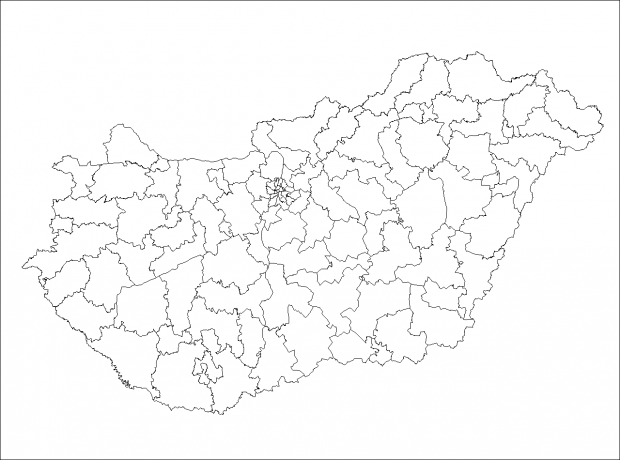On April 8th, Hungarian voters will go to the polls to elect a new parliament. The National Assembly has 199 members, 106 of them are elected in single-member electoral districts and the remaining 93 come from national party lists.
When the voter enters the polling place, he or she will present identification documents and, once verified, will be handed a ballot and head into the voting booth. On the ballot, the voter places two marks, one next to his or her preferred parliamentary candidate running in that electoral district and a second one for his or her preferred national party list. Candidates for parliament must win a plurality of the vote to win a seat in the National Assembly. For those parties that received more than five percent of the party vote, the remaining 93 seats are distributed proportionately to the number of votes they received for the national party lists (for a more detailed description, see here).

That’s much simpler than the old system that applied through 2010. So, why did Hungary’s electoral system have to be changed?
The first reason is that Hungary’s Constitutional Court said it must be revised because of the inequality of the constituencies. For example, the old, 6th electoral district in Veszprém (in western Hungary) had 27 thousand voters and the district in Gödöllő (just east of Budapest) had 67 thousand voters. Both of these districts elected just one member of parliament. That violated one of the most basic principles of modern-day elections – that is, the principle of equality of votes. Every vote should have equal or similar weight. The court ruled in 2005 – when Fidesz was in opposition – that it is unconstitutional to have the number of voters in one electoral district double that of the number in another district, so the districts must be redrawn to be more equal. Nothing was done about it until after the elections of 2010.

The other problem was that Hungary’s previous, hybrid electoral system – which was the result of a difficult political compromise in 1989-90 between the Communist Party and the democratic opposition - was one of the most complicated in Europe. The average voter couldn’t fully understand how their votes turned into seats in the parliament. This overly complicated system was intended to be a temporary solution, one that would be overhauled eventually – but no single party or coalition has had a strong enough mandate since 1990 to carry out fundamental changes in the electoral law.
The parliament also had a lot of members under the old system. For a country of 10 million citizens, we had a parliament of 386 members. To put that in perspective the Czech Republic has a 200-member legislative body, some 67 million Frenchmen are represented by only 577 deputies in the National Assembly and Germany’s Bundestag has 709 seats for 82 million.
The new electoral system, however, fixed both issues: it introduced a single-round majoritarian model (similar to the British system, for example), one that ensures increased transparency, creates stronger governments capable of pursuing much-needed reforms and is easy to understand for the voters. At the same time, in the ‘new system’ - adopted in 2011 - the size of the parliament shrank to 199 members. As noted above, 106 of those are elected in single-member electoral districts with the remaining 93 qualifying from national party lists.
The new system reduced the number of MPs and also diminished the inequalities of the electoral districts that existed under the old electoral law. Take, for example, the 6th electoral district in Veszprém with 27 thousand voters and the district in Gödöllő with 67 thousand voters. Both of these districts elected just one member of parliament. However, in a proper democracy every vote should have equal or similar weight and the electoral reform did just that: the law allows no more than 15 percent difference in district size.
That’s not all. The former system made it difficult for minority groups, or any independent candidates or small, political movements, to get on the ballot. It was difficult to meet eligibility requirements and the only way that minorities or independents could have a chance to be elected was in alliance with one of the major parties. Now, with the abolishment of the so-called ‘nomination slips’ (a number of signatures from voters who would like to see the candidate on the ballot), it is much easier for anyone who wishes to run for mandate.
So, what we were left with in 2010 was an oversized parliament, poorly apportioned electoral districts, a system disadvantageous to new parties or political players. And the new laws have successfully changed that: since 2014 Hungary has a parliament of a reasonable size, more equal constituencies and an accessible, transparent electoral system.
